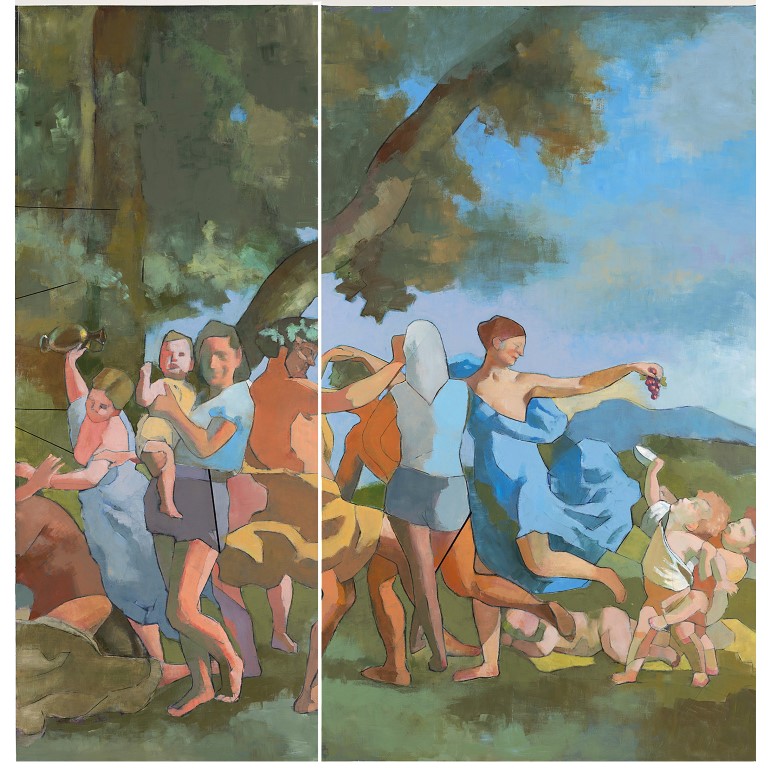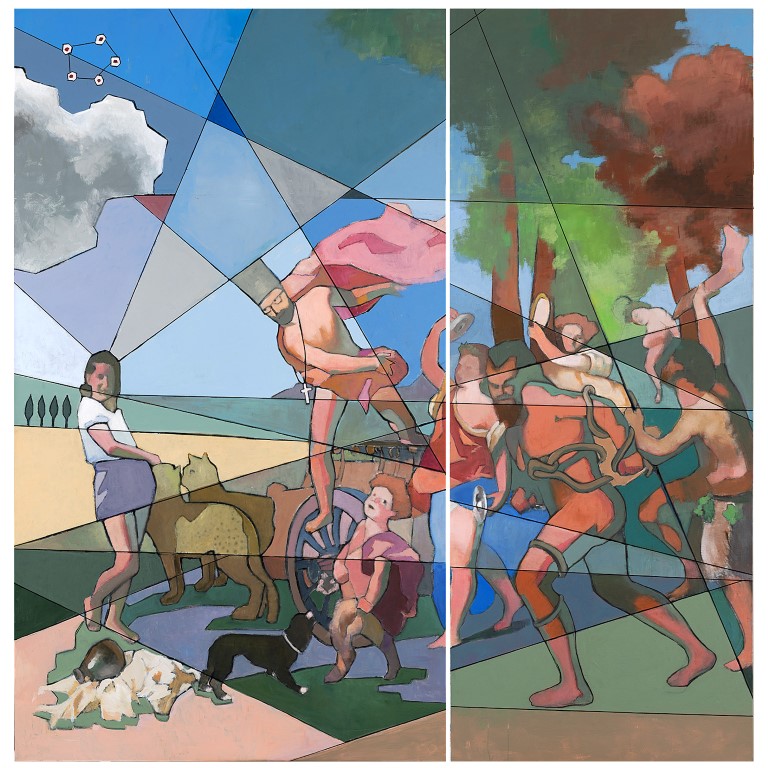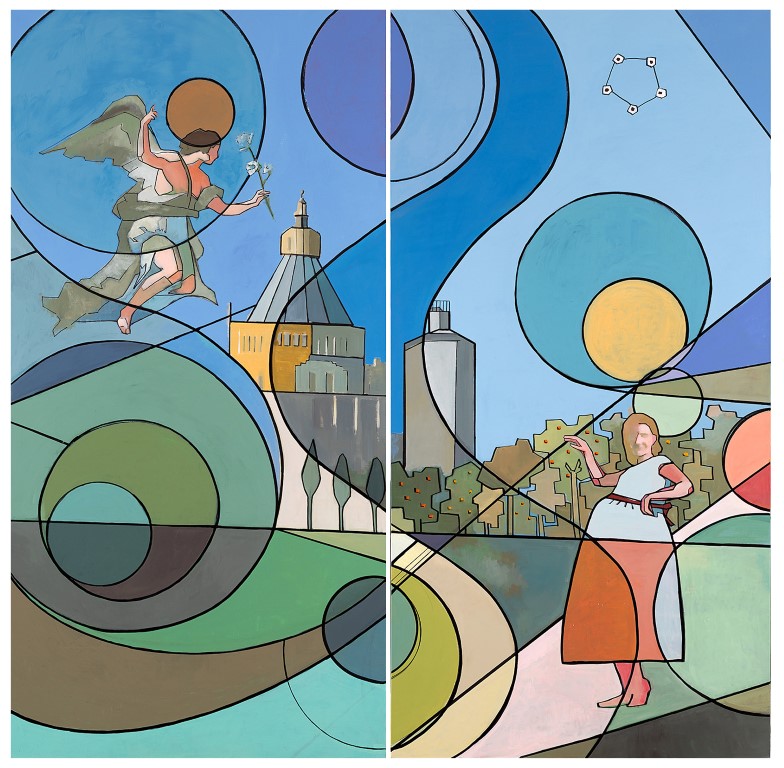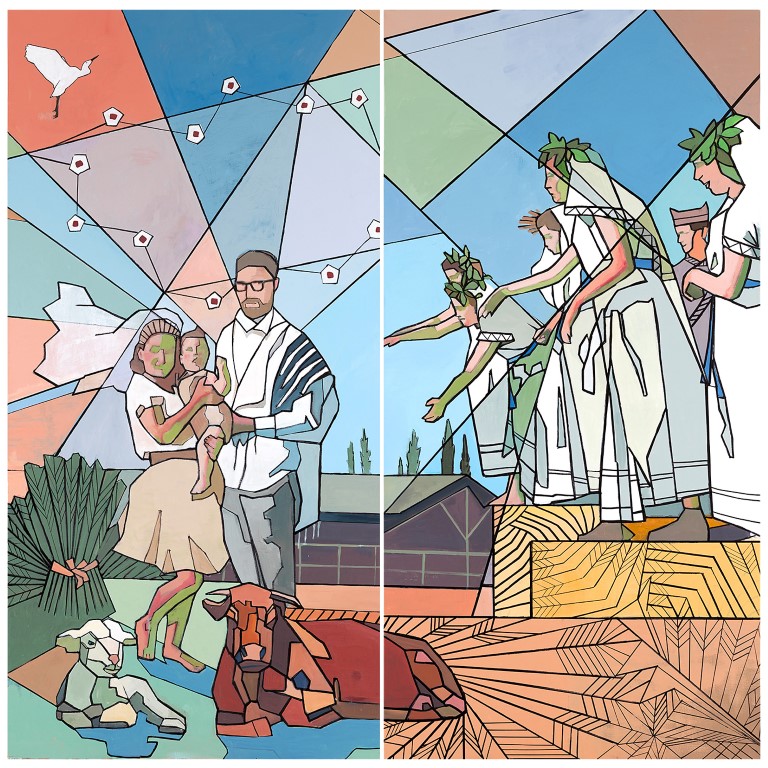Zohar Tal Inbar
Kibbutz Basilica
Curator: Einat Sinai Pasternak
September 2023
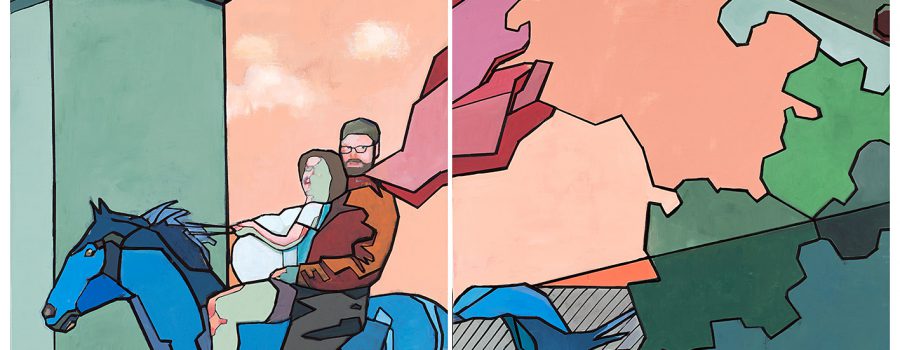
Zohar Tal Inbar | Kibbutz Basilica | Curator: Einat Sinai Pasternak
Zohar Tal Inbar (b. 1964, Kibbutz Mizra) decided to step out of her comfort zone as an artist specializing in figurative painting – still lifes, portraits, and landscapes – and conduct action research (that combines planning, systematic data collection and analysis, action, and reflection) of the old/new realm of her roots in the kibbutz, which she had distanced herself from over the years. As part of her research into the history of her family, and especially that of her parents, she found a conceptual and visual anchor in the work of two kibbutz artists: Avraham (“Tusheck”) Amarant of Kibbutz Mizra, whom she had been influenced by as a child, and Avraham Omri of Kibbutz Sha’ar Ha’Amakim, whom she became acquainted with in her adult life. She was drawn by the tendency of both of these artists to disassemble and reassemble the objects of their work, and this greatly influenced her art, which links various worlds that come together under her brush. In her present work, for the first time, she crosses European classical sources that have inspired her work to date with iconographic kibbutz-related images. She does this by juxtaposing them on stretched canvases that are placed in space in a semi-circle (a quintessential kibbutz-like arrangement).Like the Magic Lantern projectors that were used for projecting moving images onto a wall in the early days of the first kibbutzim, Tal Inbar presents a fantastic, serialized story in which the personal corresponds with the public. She examines her identity and redefines it through references to classic works of Israeli, global, and kibbutz culture, into which she breathes a new and contemporary spirit. Kibbutz Basilica presents a spiritual world that encompasses the values of creativity, freedom of expression, freedom of choice, and equality between people. In doing so, it heightens the secular sanctity of the Mishkan Museum of Art, Ein Harod, within the context of the values that led to its establishment.
